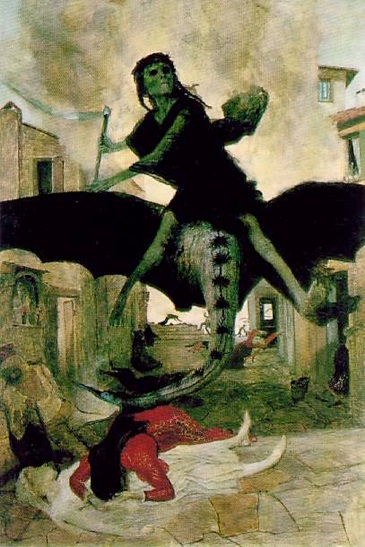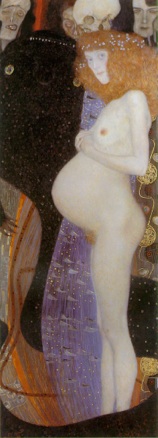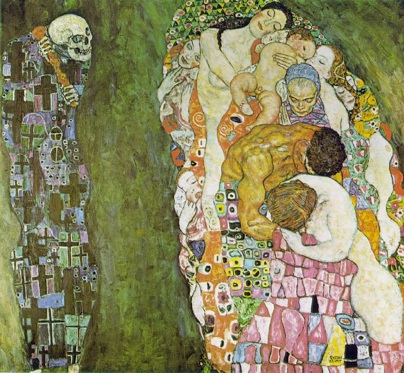Symbolism






Symbolism? Is this Good, Pleasant, or Beautiful?
Gustave Moreau, “The Apparition,” 1874-6

These works of Symbolism would most strictly be labeled Good, in that they require that we bring conceptual knowledge to our viewing of them
Symbolism developed out of French Romanticism in the latter half of the 1800’s, first as a predominately literary school, and then expanding into the visual arts. The term was coined by Jean Moreas, the poet, in his 1886 Le Figaro and its recurrent themes of decadence, dandyism, and mysticism (also with their compatriot morbidity) were drawn from the fiction of J.K. Huysmans. Yet, Stephane Mallarme may be the best known symbolist poet, emphasizing that meaning should be conveyed through suggestion and symbol, rather than directly; feelings should be emphasized over reason, yet not ignore the intellectual; and the evocative should provoke and elicit meaning rather than rely on explicit analogy or description.
Gustave Moreau (1826-1898) is most known for his revival of Greek myths, relying on their treasure trove of symbolic imagery, but often adding new twists to the tales. In this work, “The Apparition,” the symbol of God or Christ in the sketchily suggested cathedral, cast in light and hovering plays on classical Christian imagery, like the names we saw P-D employ.
Arnold Boecklin, “The Plague,” 1898

Arnold Boecklin (Böcklin) (1827-1901) Swiss Symbolist painter, emphasized the morbid energy, rather than decadent melancholia, of symbolism, obsessed with death, and relied on mythology almost as much as Moreau (his own 1872 self portrait places a skeleton playing a violin behind his left shoulder). Studied in Düsseldorf and became friends with Ludwig Feuerbach. The subject of his work “The Plague” [tempura on wood, 149 cm x 105 cm, Kunstmuseum Basel] was poignant to him, fleeing two cholera epidemics with his family, he also saw five of his 11 children die in infancy.
(for many collected images: http://www.arnoldbocklin.com/)
Gustav Klimt (1862-1918):
“Hope 1,” 1903 (left) and “Life and Death,” 1916 (right)


These are more questionable works of art when we ask if they are Beautiful, Pleasant, or Good. They do use symbolism, like the previous examples, here, relying on dichotomies like good and evil, life and death, light and dark, etc. But, these symbols may only further their meaning rather than almost entirely ground meaning, as in the last slides. Strictly, they would be more Good than not, requiring that we bring conceptual knowledge to our viewing of them.
Gustav Klimt (1862-1918) Austrian Symbolist Painter and preeminent figure in early 20th c. Art Nouveau (b. near Vienna); member of Wiener Sezession (Vienna Secession) movement [1897, president of such and founding member; goals to provide exhibitions for unconventional, young artists; no manifesto, no guiding style]. Like the other symbolists, he used mythical figures and accounts in his works, but less explicitly. It is his then-considered explicit works that we know him for today, his partial nudes of women adorned in colorful, bejeweled robes, in which he often, he used actual gold leaf.


